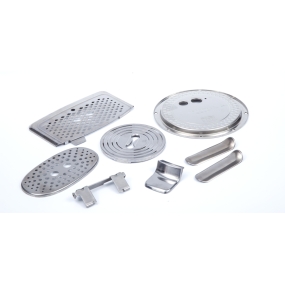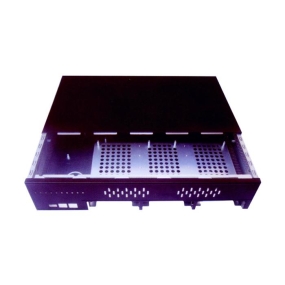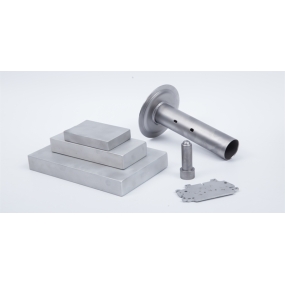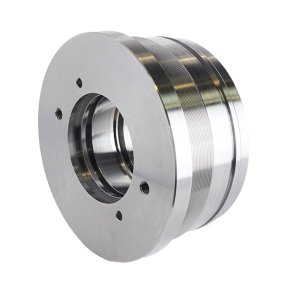Detecting the positioning accuracy of CNC Machining centers is a complex but crucial process that directly affects the quality and accuracy of machined parts. The following are the testing methods for the positioning accuracy of CNC machining centers based on national standards and the regulations of the International Organization for Standardization (ISO), as well as common practices: 1. Testing environment and conditions · No load conditions: The testing of linear motion positioning accuracy is generally carried out under the condition of no load on the machine tool and worktable to ensure the accuracy of the measurement results. 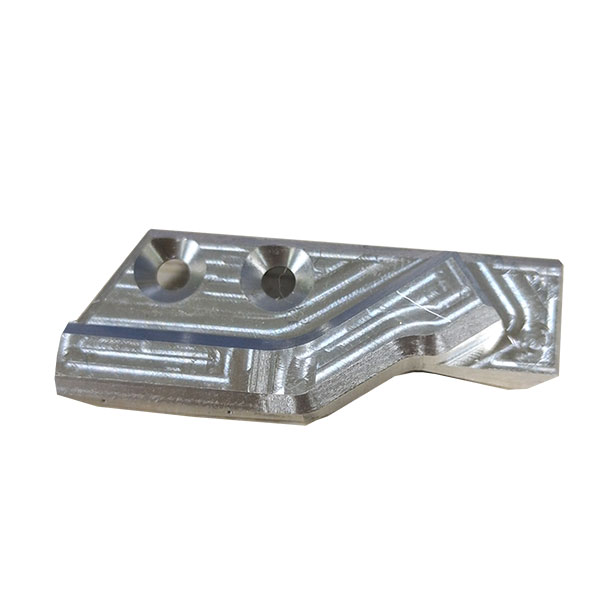 · Temperatura et status videi: Resulta measurement of positioning accuracy are related to the environmental temperature and the working state of the coordinate axis. Therefore, it is necessary to measure under a stable environmental temperature and consider the impact of the working state of the coordinate axis on accuracy. 2 , Testing tools and equipment - Laser interferometer: According to national standards and the regulations of the International Organization for Standardization, laser measurement should be used as the standard for testing CNC machine tools. Laser interferometer est alta precision et alta stabilitate mensurae apparatus qui accurately mensurare potest displaciationem et angularum variationes instrumentorum machinarum, et ex hoc precision positionis eorum evaluere·t· Standard scale and optical reading microscope: CNC machining centers can use a standard scale with an optical reading microscope for comparative measurement without a laser interferometer. However, it should be noted that the accuracy of the measuring instrument is 1-2 levels higher than that of the tested instrument. 3,Detection method and steps: Select measurement location: Measure at any three positions near the midpoint and ends of each coordinate stroke. Selection of these positions can comprehensively reflect the positioning accuracy of the machine tool in different stroke segments. Repeat positioning measurement: At each measurement position, use a fast moving position method to repeat positioning 7 times under the same conditions (or determine the number of times according to specific standards), measure the value of the stop position, and calculate the maximum difference in readings· Calculate the repetitibility accuracy: Take half of the largest difference between the three positions (with positive and negative symbols attached) as the repeatability accuracy for that coordinate. Haec indicator basic reflecting the stability of the axis motion accuracy Origine revertere accuracionem detectionem: Origine revertere accuracionem est essentiam repetitionem positionis accuracionem punctis special is super axis coordinatae, sic id est method detectionis eius aeque repetitionem accuracionem positionis Reverse error detection: The reverse error (loss of momentum) of linear motion reflects the comprehensive influence of errors such as the reverse dead zone of the driving components on the coordinate axis feed transmission chain, the reverse clearance of each mechanical motion transmission pair, and elastic deformation. Metodo detection is est movere distanciam in novissimo aut reverso oriente intra strocam axis coordinationis mensurae, et utilizat hunc positionem stationis in referentia. tunc, date iuxta causam motionis in eadem direction et movere distancem in reverso direction ut mensurare differentiam inter positionem stationis et positionem referentiae. Multi mensurae facite (normale 7 vices) in tres positionibus proximo medio puncti et finibus viae, et mediam valorem in singulis positionibus calculate ad evaluendum errorem reversam· Positioning accuracy detection of CNC rotary worktable: For CNC rotary worktable, rapid positioning measurement should be carried out with a target position of every 30. Quickly locate each target position multiple times (e.g. 7 times) from both positive and negative directions, calculate the difference between the actual achieved position and the target position as the position deviation, and use the methods specified in relevant standards (such as GB10931-89) to calculate the average position deviation and standard deviation to evaluate its positioning accuracy. 4, · Attention · Instrument accuracy requirements: The accuracy of the measuring instrument must be 1-2 levels higher than the measured accuracy to ensure the accuracy of the measurement results· Error analysis and handling: During the measurement process, attention should be paid to observing and recording factors that may affect the measurement results, such as temperature fluctuations, machine tool vibrations, etc., and considering the impact of these factors on positioning accuracy during data analysis· At the same time, the machine tool itself should also undergo regular maintenance and upkeep to improve its overall performance and positioning accuracy.
· Temperatura et status videi: Resulta measurement of positioning accuracy are related to the environmental temperature and the working state of the coordinate axis. Therefore, it is necessary to measure under a stable environmental temperature and consider the impact of the working state of the coordinate axis on accuracy. 2 , Testing tools and equipment - Laser interferometer: According to national standards and the regulations of the International Organization for Standardization, laser measurement should be used as the standard for testing CNC machine tools. Laser interferometer est alta precision et alta stabilitate mensurae apparatus qui accurately mensurare potest displaciationem et angularum variationes instrumentorum machinarum, et ex hoc precision positionis eorum evaluere·t· Standard scale and optical reading microscope: CNC machining centers can use a standard scale with an optical reading microscope for comparative measurement without a laser interferometer. However, it should be noted that the accuracy of the measuring instrument is 1-2 levels higher than that of the tested instrument. 3,Detection method and steps: Select measurement location: Measure at any three positions near the midpoint and ends of each coordinate stroke. Selection of these positions can comprehensively reflect the positioning accuracy of the machine tool in different stroke segments. Repeat positioning measurement: At each measurement position, use a fast moving position method to repeat positioning 7 times under the same conditions (or determine the number of times according to specific standards), measure the value of the stop position, and calculate the maximum difference in readings· Calculate the repetitibility accuracy: Take half of the largest difference between the three positions (with positive and negative symbols attached) as the repeatability accuracy for that coordinate. Haec indicator basic reflecting the stability of the axis motion accuracy Origine revertere accuracionem detectionem: Origine revertere accuracionem est essentiam repetitionem positionis accuracionem punctis special is super axis coordinatae, sic id est method detectionis eius aeque repetitionem accuracionem positionis Reverse error detection: The reverse error (loss of momentum) of linear motion reflects the comprehensive influence of errors such as the reverse dead zone of the driving components on the coordinate axis feed transmission chain, the reverse clearance of each mechanical motion transmission pair, and elastic deformation. Metodo detection is est movere distanciam in novissimo aut reverso oriente intra strocam axis coordinationis mensurae, et utilizat hunc positionem stationis in referentia. tunc, date iuxta causam motionis in eadem direction et movere distancem in reverso direction ut mensurare differentiam inter positionem stationis et positionem referentiae. Multi mensurae facite (normale 7 vices) in tres positionibus proximo medio puncti et finibus viae, et mediam valorem in singulis positionibus calculate ad evaluendum errorem reversam· Positioning accuracy detection of CNC rotary worktable: For CNC rotary worktable, rapid positioning measurement should be carried out with a target position of every 30. Quickly locate each target position multiple times (e.g. 7 times) from both positive and negative directions, calculate the difference between the actual achieved position and the target position as the position deviation, and use the methods specified in relevant standards (such as GB10931-89) to calculate the average position deviation and standard deviation to evaluate its positioning accuracy. 4, · Attention · Instrument accuracy requirements: The accuracy of the measuring instrument must be 1-2 levels higher than the measured accuracy to ensure the accuracy of the measurement results· Error analysis and handling: During the measurement process, attention should be paid to observing and recording factors that may affect the measurement results, such as temperature fluctuations, machine tool vibrations, etc., and considering the impact of these factors on positioning accuracy during data analysis· At the same time, the machine tool itself should also undergo regular maintenance and upkeep to improve its overall performance and positioning accuracy.
Salve! Welcome to the EMAR company website!
 Latin
Latin » »
» »
 English
English Spanish
Spanish Arabic
Arabic Portuguese
Portuguese Belarusian
Belarusian Japanese
Japanese Russian
Russian Icelandic
Icelandic Bulgarian
Bulgarian Azerbaijani
Azerbaijani Estonian
Estonian Irish
Irish Polish
Polish Persian
Persian Boolean
Boolean Danish
Danish German
German French
French Filipino
Filipino Finnish
Finnish Korean
Korean Dutch
Dutch Galician
Galician Catalan
Catalan Czech
Czech Croatian
Croatian Latvian
Latvian Romanian
Romanian Maltese
Maltese Malay
Malay Macedonian
Macedonian Norwegian
Norwegian Swedish
Swedish Serbian
Serbian Slovak
Slovak Slovenian
Slovenian Swahili
Swahili Thai
Thai Turkish
Turkish Welsh
Welsh Urdu
Urdu Ukrainian
Ukrainian Greek
Greek Hungarian
Hungarian Italian
Italian Yiddish
Yiddish Indonesian
Indonesian Vietnamese
Vietnamese Haitian Creole
Haitian Creole Spanish Basque
Spanish Basque



